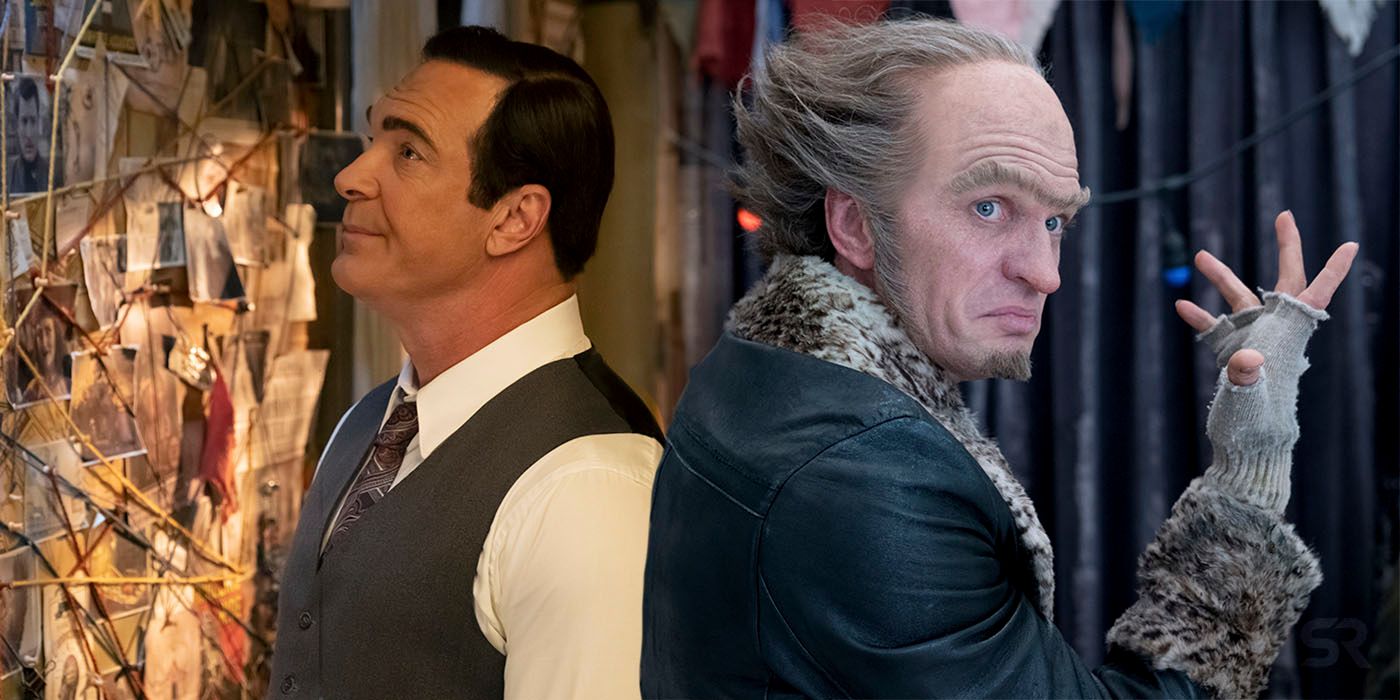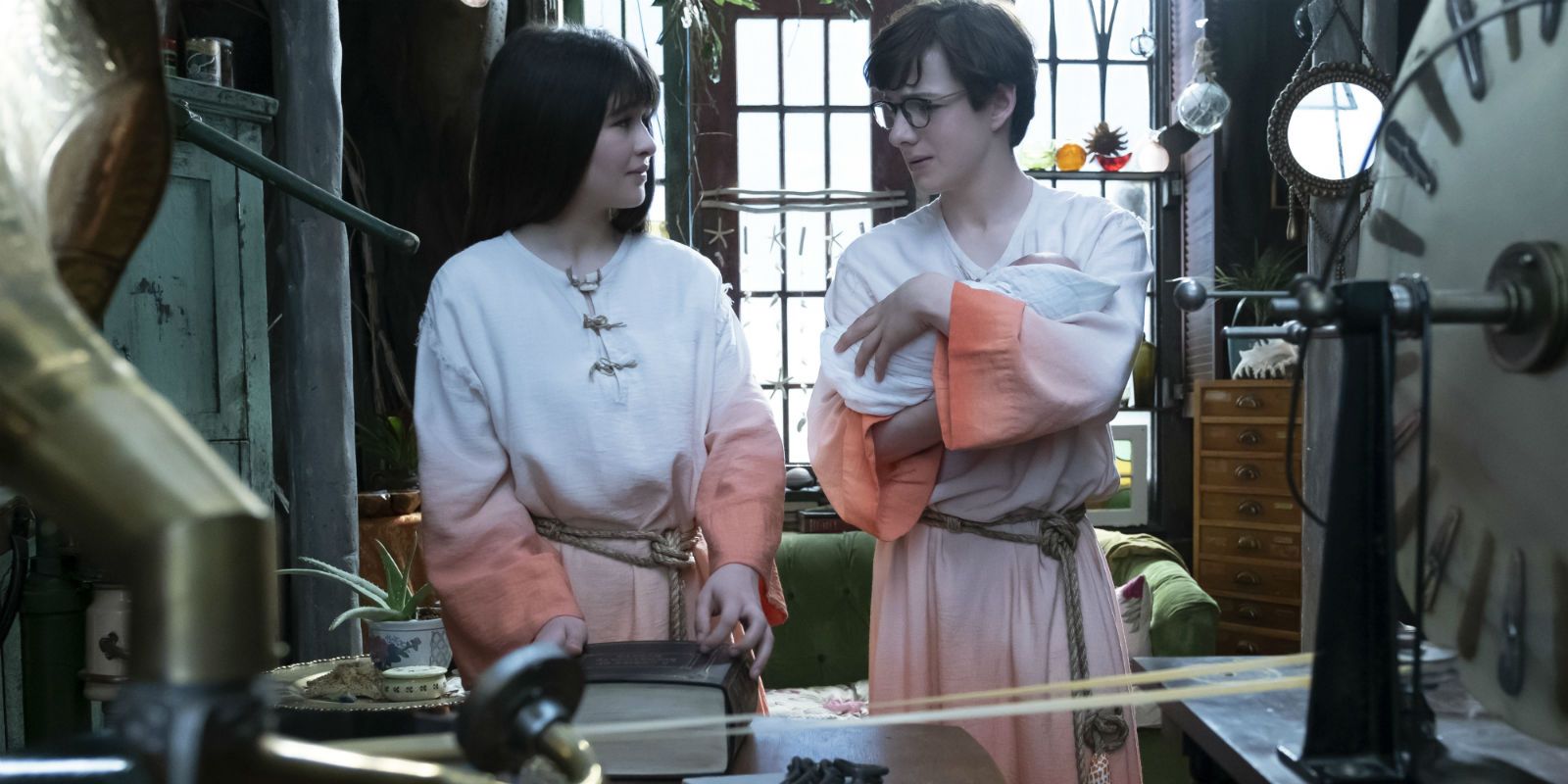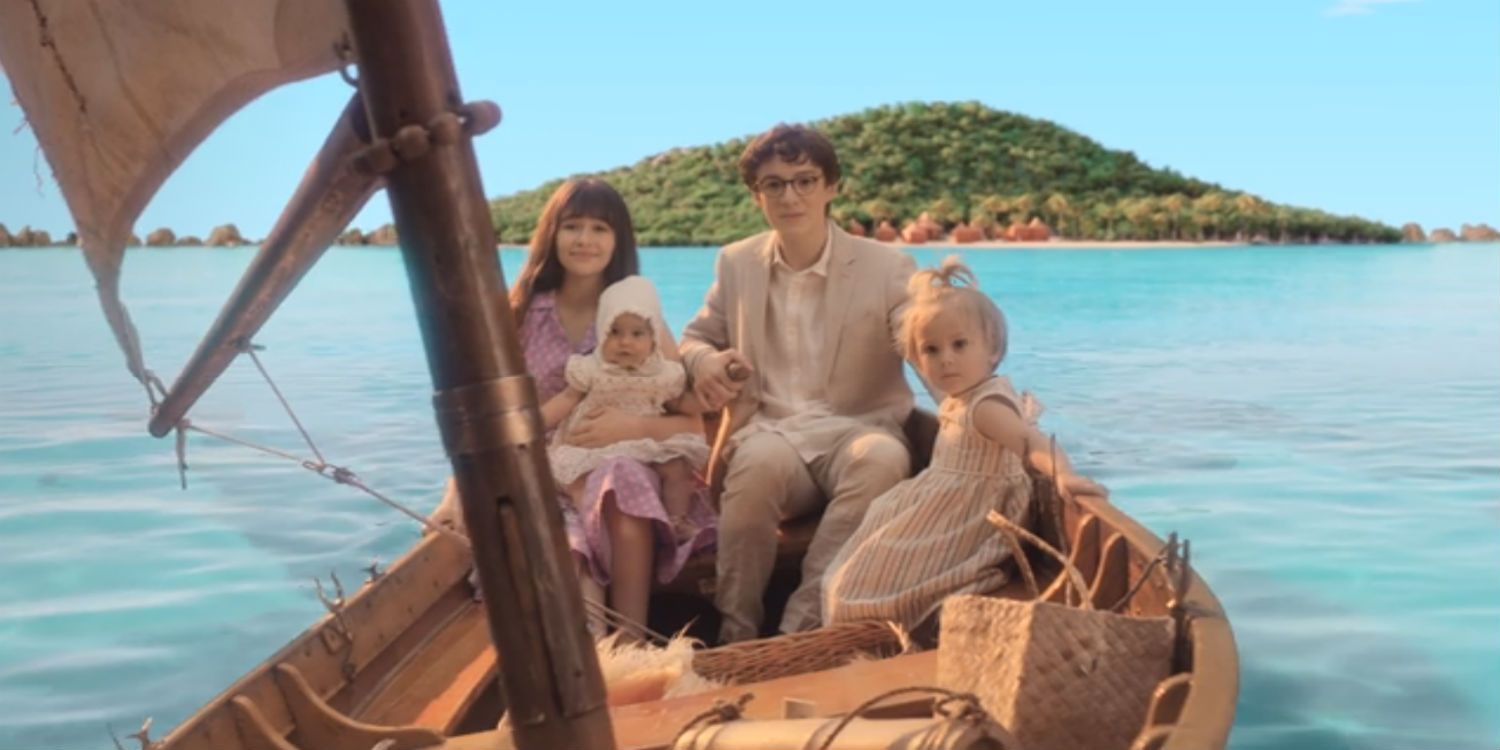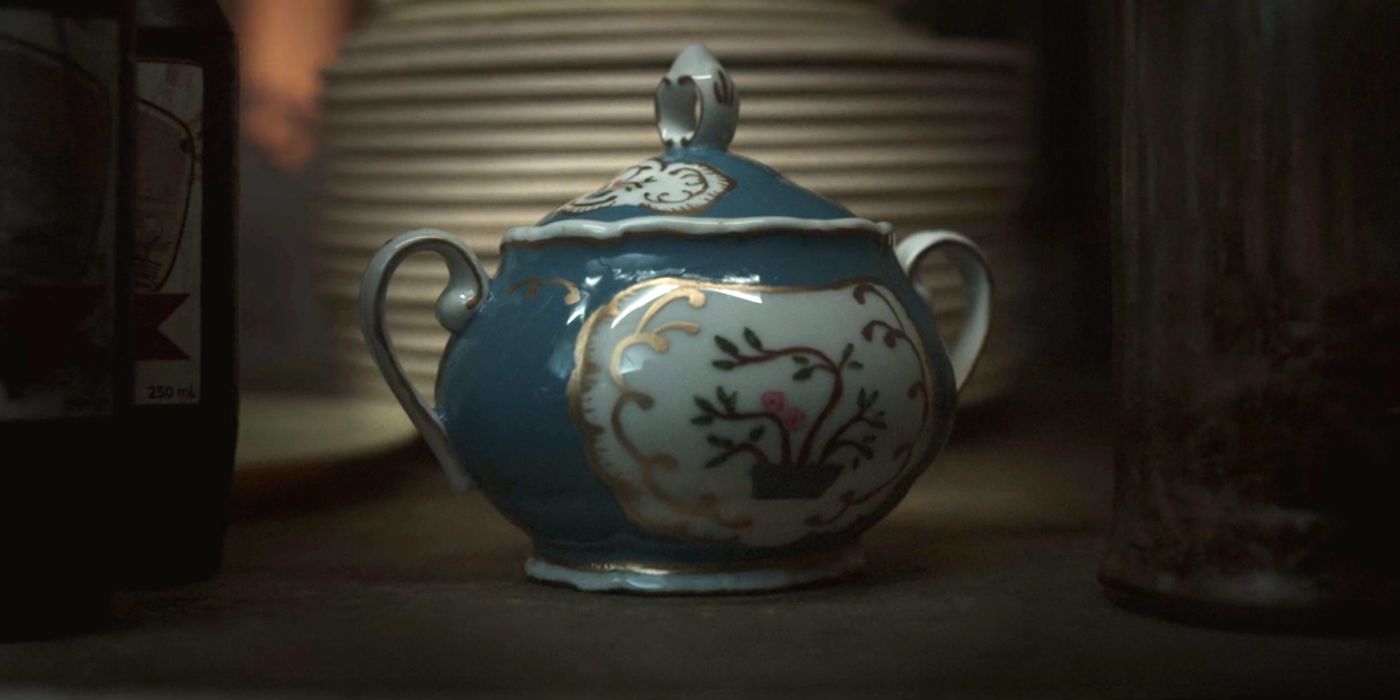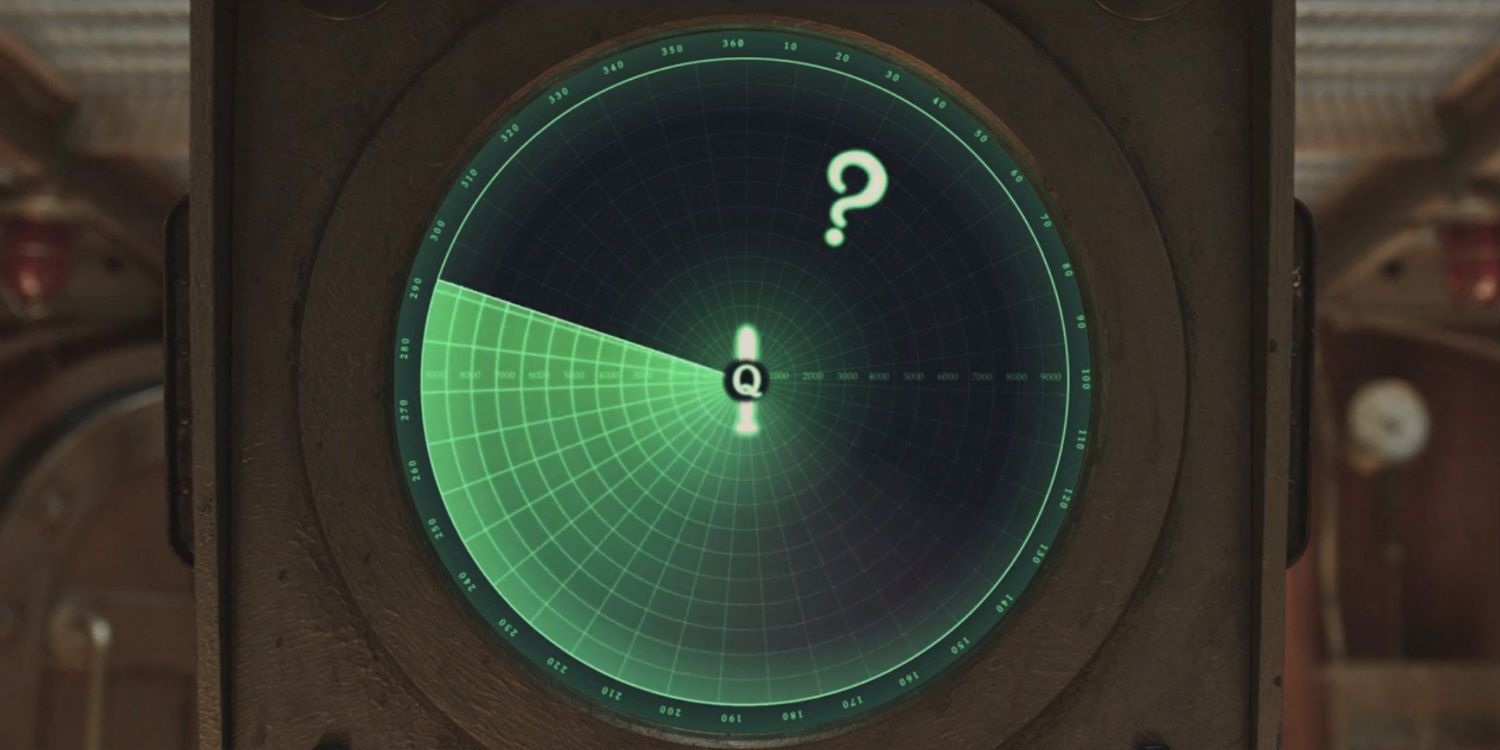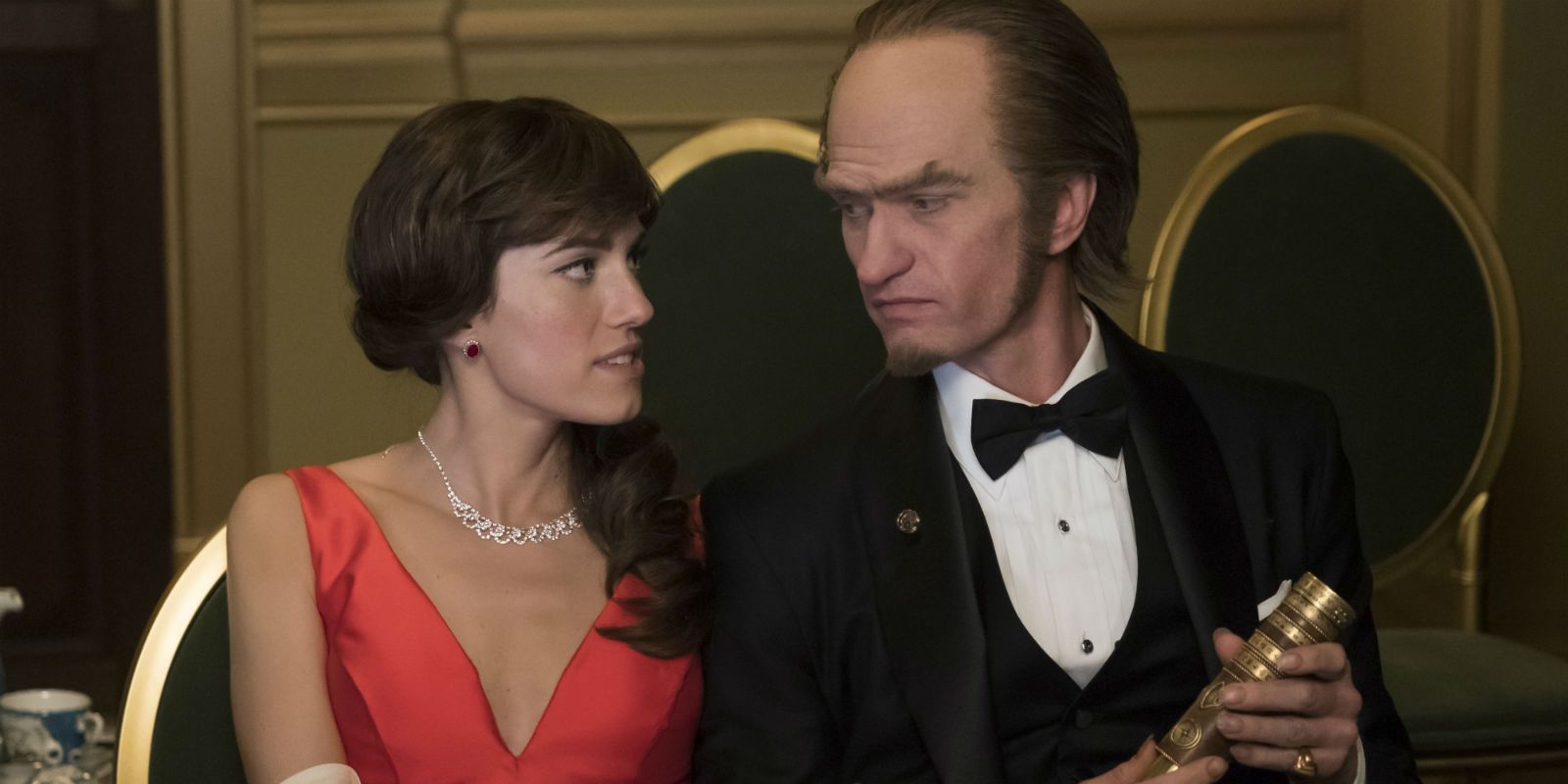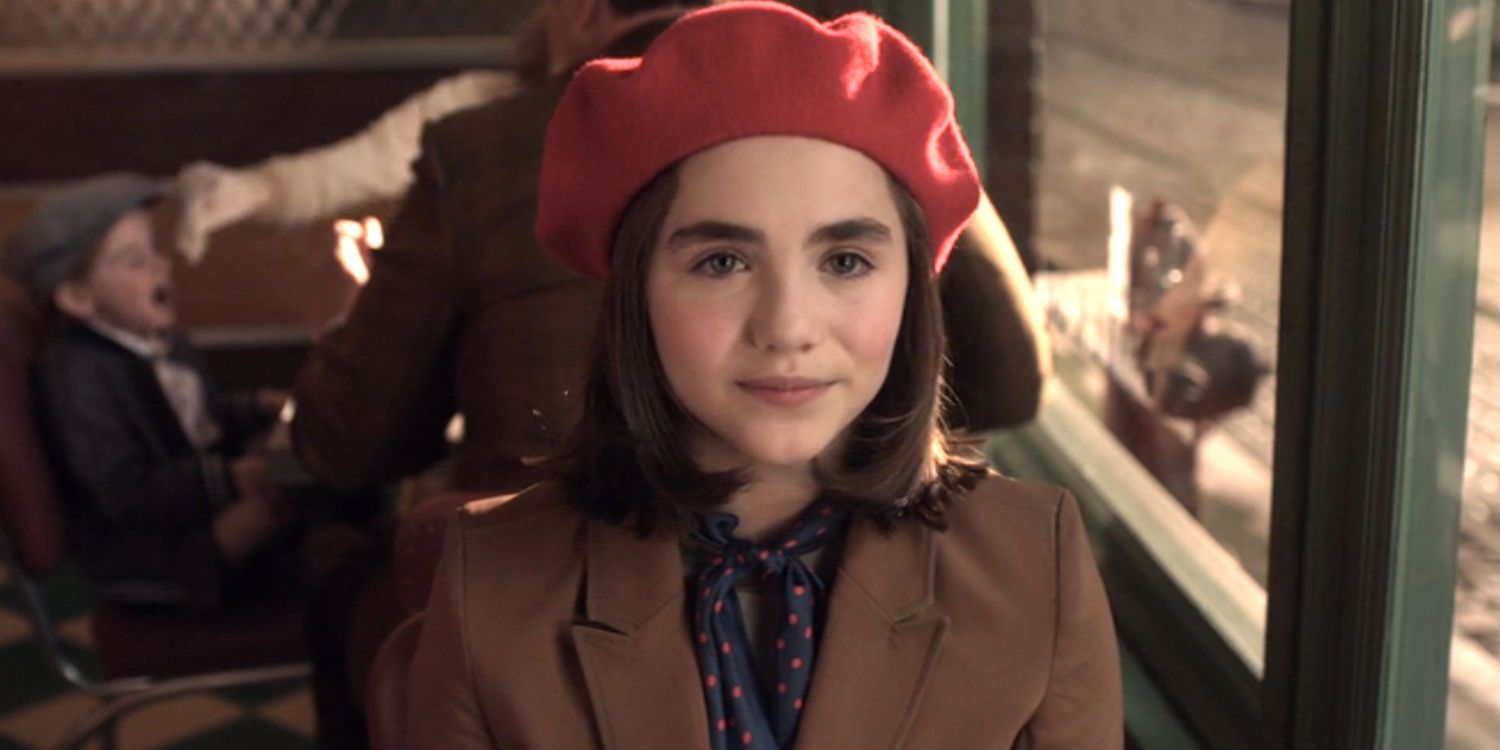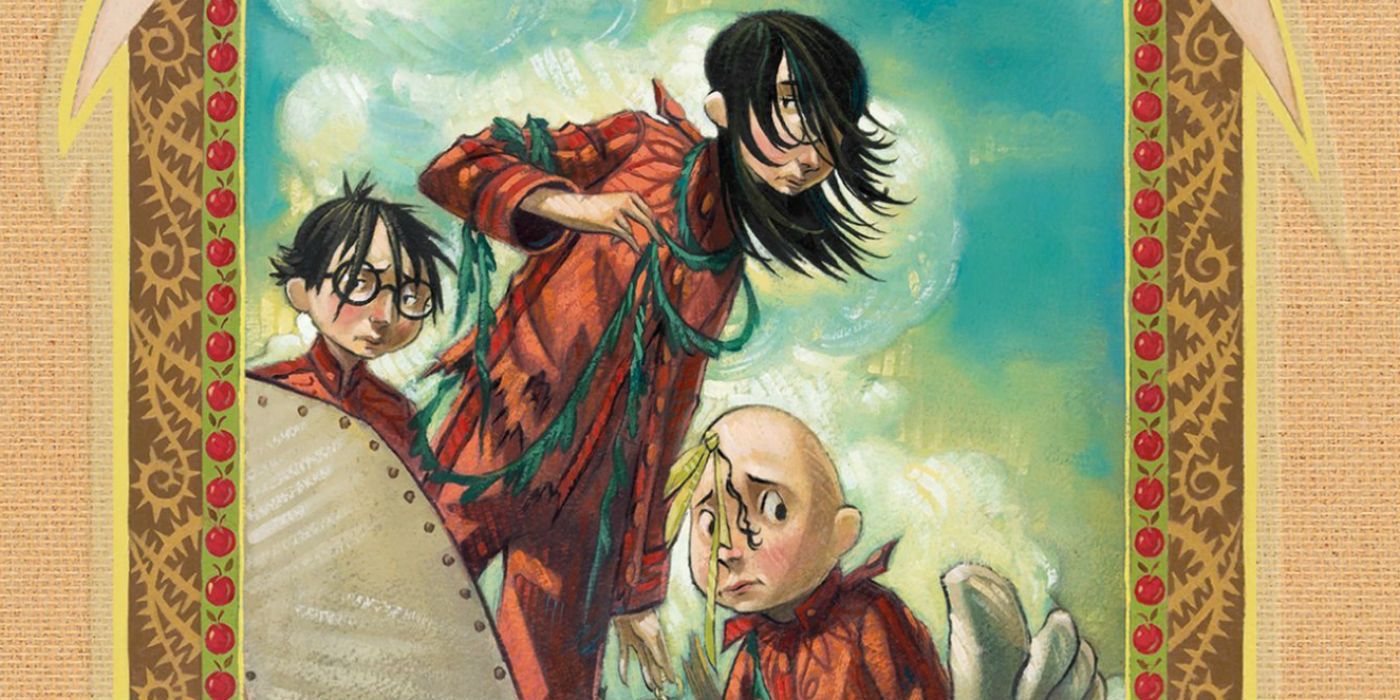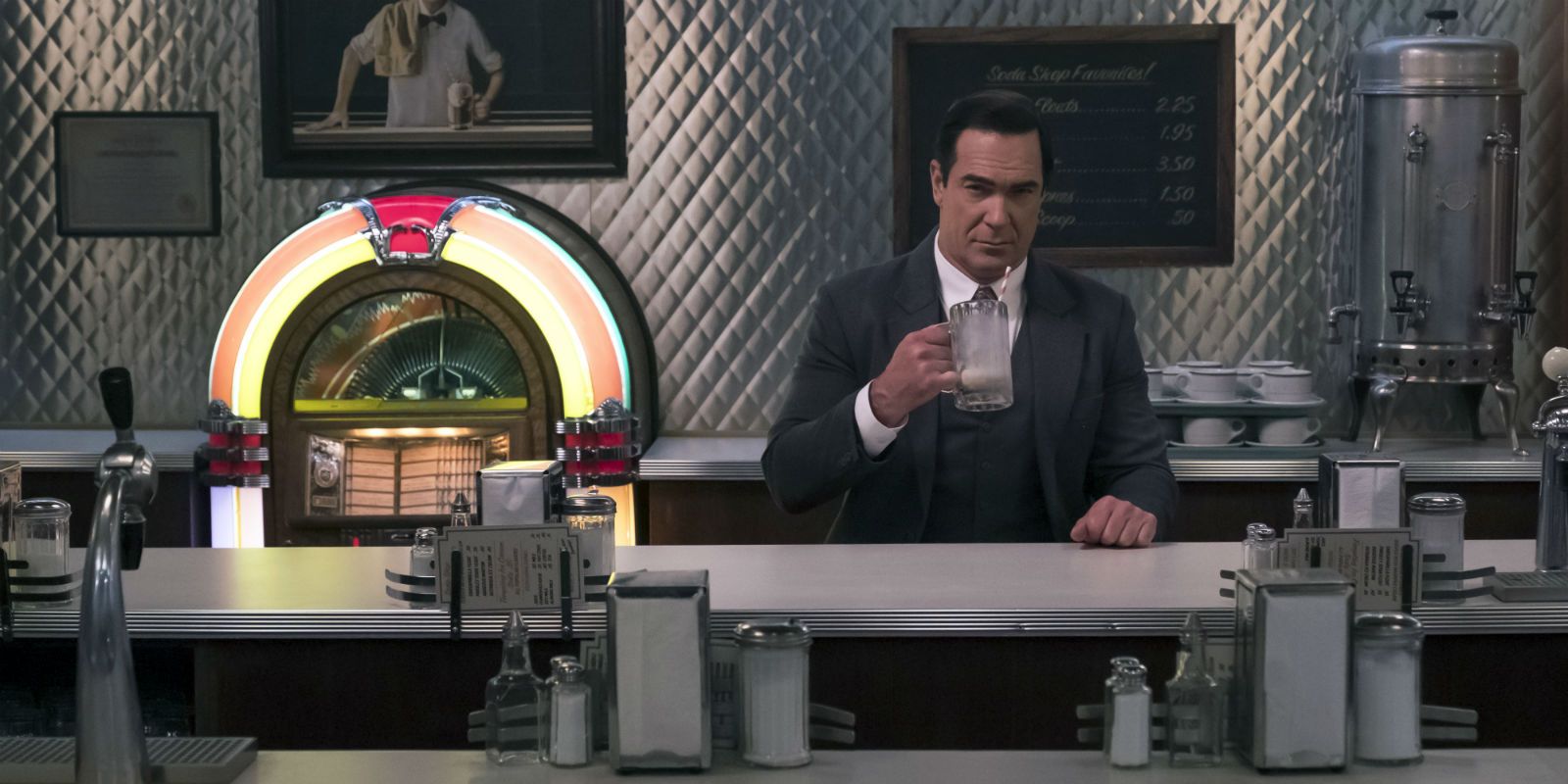If, against all sensible advice, you've watched A Series of Unfortunate Events all the way through to the end of season 3, we've put together a breakdown to explain the major twists, big reveals, and lingering mysteries. The Netflix series has closely followed the plot beats of the book series upon which its based, and it ends in the same place the books do: a final tale called "The End," in which the Baudelaires are shipwrecked on an island and find the answers to many of their questions.
Since Mr. Poe first arrived on Briny Beach to inform the three Baudelaire children that they were now the Baudelaire orphans, A Series of Unfortunate Events has certainly lived up to its name. The show has taken the Baudelaires on a long and difficult journey, and placed them in the hands of many different guardians - some well-meaning but flawed, and others openly cruel.
Related: A Series Of Unfortunate Events Season 3 Cast & Character Guide
A particular poem by Algernon Charles Swinburne claims "That even the weariest river/Winds somewhere safe to sea" - but do the weary Baudelaires wind somewhere safe by the end of A Series of Unfortunate Events, or is the ending of this tale as unfortunate as the beginning and middle?
- This Page: What Happens At The End Of A Series of Unfortunate Events
- Page 2: The Sugar Bowl and the Great Unknown
- Page 3: The History of V.F.D. and the Beatrice Twist
- Page 4: Changes From the Books and What The Ending Means
What Happens At The End of A Series Of Unfortunate Events
After the Hotel Denouement burns down at the end of "The Penultimate Peril Part 2," the Baudelaires escape by launching the Carmelita 2 off the roof and using a drag chute to guide it safely down to the ocean. Unfortunately, they escape with Count Olaf, who spends their time on the ocean gloating about his "victory" instead of helping to row the boat.
A storm carries the Carmelita 2 and its passengers to the coastal shelf of a mysterious island shaped like the V.F.D. symbol. There, the Baudelaires meet a peaceful group of colonists and their facilitator, Ishmael, who welcomes the children but (following an attempted coup) orders that Count Olaf be put in a bird cage and left on the sea wall to drown in the next storm. At first island life seems idyllic, but then the Baudelaires notice that the colonists are being kept content and forgetful by drinking only fermented coconut milk, and that Ishmael "suggests" that any washed-up items be sent to the other side of the island, as they're too dangerous. After a failed effort to get information out of Count Olaf, the Baudelaires notice that Ishmael is gone from his tent, and follow his footprints to the other side of the island.
There they find piles of items that have been washed up during storms, and discover a secret house hidden inside a tree, which is full of clever inventions and - most intriguingly - books written in their parents' handwriting. Ishmael reveals that he is both the founder of V.F.D. and the Principal of Prufrock Preparatory School. He used his position at the school to recruit children with an innate sense of curiosity and desire for adventure into a secret organization, whose role was to put out the figurative fires of the world. However, after the schism Ishmael abandoned V.F.D. and went to live on the island, where he tried to lead the colonists in simple lives free of curiosity. He invites the Baudelaire orphans to join him: drink the cordial, forget their troubles, and live out their lives in peace on the island.
The next day is Decision Day - the one day of the year when the tides rise, making it possible to leave the island. The Baudelaires confront Ishmael in front of the colonists and accuse him of controlling them. However, they are interrupted when Friday spots another castaway - Kit Snicket, who has survived an encounter with the Great Unknown and washed up on a raft made of books. At the same time, Count Olaf reappears, disguised as Kit... but everyone sees through the disguise.
As Violet and Sunny rush to help Kit, Olaf reveals that he has found the Medusoid Mycelium, and threatens to unleash it and kill everyone on the island unless Ishmael hands over his canoe and the Baudelaire orphans. In response, Ishmael gets out a harpoon gun and shoots Olaf in the stomach. Unfortunately, Olaf's "baby bump" was actually the diving helmet containing the Medusoid Mycelium, and the harpoon breaks through it, unleashing the deadly fungi and infecting everyone on the island. Despite the Baudelaires' protests, Ishmael decides to set sail on the canoe with the colonists in the hope of reaching the horseradish factory on Lousy Lane (horseradish being an antidote to the Medusoid Mycelium).
The Baudelaires head to their parents' old house on the other side of the island to search for an antidote, but there is no horseradish or wasabi, nor any other substitute. Skimming through their parents' book, they realize that the apples of the tree they're inside are another antidote, but they are too weak to leave and instead collapse on the floor. When it seems like all is lost, the Incredibly Deadly Viper (who, along with many other things from their past, washed up on the island during a storm) appears with an apple. The Baudelaires each take a bite, and are cured. However, when they return to Kit and offer her a bite of the apple, she refuses, explaining that it could hurt her baby.
Weakened by the poison, the Baudelaires enlist Count Olaf's help in carrying Kit from the coastal shelf to the island. He and Kit were once romantically involved, and he is still in love with her, so he takes a bite of the apple and uses the last of his remaining strength to carry her to safety. On the beach, Olaf and Kit share a tender moment, and then Olaf succumbs to the wound from the harpoon and dies. Kit gives birth to her baby and takes a bite of the apple afterwards, but the antidote is given too late. She dies, and the Baudelaires bury her next to Olaf on the beach.
A year passes, during which the Baudelaires learn a great deal about their parents and V.F.D. by reading the book that they left behind. At Kit's request, they have named her baby Beatrice, after their mother. Beatrice's first birthday is also Decision Day - the first opportunity the Baudelaires have to leave the island. They decide to do so, and sail off with baby Beatrice.
Many years later, Beatrice Baudelaire II - now about ten years old - invites Lemony Snicket to meet her for a root beer float. Snicket had run into a dead end in his research about the Baudelaires, and never found out what became of them. Beatrice introduces herself to Lemony as his niece, and then gets out the book An Incomplete History, which the Baudelaire children have added to. She begins to tell Lemony the story of what happened to the Baudelaires after they left the island, and that's where the series ends.
Page 2: The Sugar Bowl and the Great Unknown
What's Inside the Sugar Bowl?
One of the big mysteries of A Series Of Unfortunate Events is that of what exactly is inside Esmé Squalor's stolen sugar bowl, and why exactly everyone on both sides of the V.F.D. schism is so desperate to get their hands on it. After everyone gathers at the Hotel Denouement, with both noble and villainous people hoping to catch the sugar bowl when it's dropped off by one of V.F.D.'s carrier crows, the sugar bowl gets dropped into a vent that looks like a laundry chute, but actually leads to Dewey Denouement's secret library in the hotel's sub-basement. Since Dewey is dead and only the Baudelaires know about the secret library, that may well have been the sugar bowl's final resting place.
Esmé Squalor, it seems, is only interested in the sugar bowl because it completes her tea set and was stolen from her by Beatrice Baudelaire and Lemony Snicket. However, in "The End" Kit reveals to the Baudelaires that the sugar bowl does actually contain something of value: sugar. Specifically, sugar derived from a botanical hybrid that immunizes people against the effects of the Medusoid Mycelium.
Some viewers may be understandably be confused by this reveal. After all, is a vaccine against a type of poisonous fungus so rare that it only exists in a single underwater grotto really worth all that fuss? Well... yes. The Medusoid Mycelium is so deadly and spreads so virulently that it's effectively a weapon of mass destruction. If brought to the mainland, it could spread quickly enough to cause an apocalyptic scenario. Those on the villainous side of the V.F.D. schism love starting fires, and the Medusoid Mycelium is more destructive than any fire. The contents of the sugar bowl are capable of rendering the fungi harmless.
If you're still unconvinced, it's also worth noting that only a small number of people seem to actually know what's inside the sugar bowl. For many of the characters hunting for it, it simply represents something that everyone on both sides of the schism is trying to get their hands on, and therefore its value is assumed. In that respect, the sugar bowl is more of a symbol of the struggle for power than anything else.
What Is The Great Unknown?
Another lingering mystery in A Series of Unfortunate Events is that of the Great Unknown - the enormous sea creature shaped like a question mark that the Baudelaires encounter in "The Grim Grotto," and which also attacks the Queequeg and leads to Kit being shipwrecked on the island. In the books, the Great Unknown is also called the Bombinating Beast, and both the prequel book Who Could That Be at This Hour? and a statue of the Great Unknown in the TV show depict it as being a seahorse-like creature - which explains the shape it takes on the radar.
Like the sugar bowl, the Great Unknown is as much a symbol as it is a tangible thing. Much of A Series of Unfortunate Events is about characters struggling with the great unknown: Lemony Snicket with the unanswered question of what happened to the Baudelaire children, and the children themselves with the many questions they have about V.F.D. and their parents. The series frames knowledge - the gaining, chronicling, and passing down of information and wisdom - as a wonderful thing and the loss of knowledge (for example, by villainous people burning down a library) as a great tragedy. The Great Unknown isn't just terrifying because it's a giant sea beast; it's terrifying because it represents all the things we don't know, and may never know. However, it also represents the thrill of seeking to expand our knowledge, and therefore isn't wholly good or bad.
Page 3: The History of V.F.D. and the Beatrice Twist
The History of V.F.D. and The Night At The Opera
Over the course of A Series of Unfortunate Events we finally learn the history of V.F.D. and the story of how Count Olaf split away from the organization during the schism. As mentioned previously, Ishmael reveals that he was the original founder of V.F.D. and that he recruited Volunteers as children during their time at Prufrock Preparatory School - which is why so many of the characters we meet over the course of the series attended Prufrock Prep. At first V.F.D. was a noble organization, but at some point there was a schism between those who wanted to start fires (both figuratively and literally) and those who wanted to put them out.
A flashback in "The Penultimate Peril: Part 2" finally reveals the origin of the schism. Beatrice, Lemony, Esmé, Kit, and Olaf were all at the opera one fateful evening, when Kit and Olaf were romantically involved, as were Lemony and Beatrice. After her performance in the opera (Giuseppe Verdi's La forza del destino or The Force of Destiny), Beatrice tried to persuade Esmé to willingly hand over the sugar bowl, but Esmé refused, insisting she could be trusted to keep it safe.
Believing they only had one option left, Lemony and Beatrice distracted Esmé by telling her to watch the opera closely, and then stole the sugar bowl. However, Esmé noticed it was missing and gave chase, leading to a standoff with Lemony, Beatrice, and Esmé all wielding poison darts. They were interrupted by the arrival of Olaf's father, the Fire Chief, and a poison dart thrown by Beatrice hit him in the neck, killing him. Olaf assumed that Lemony had thrown the dart, and Lemony decided to take the fall for it - going on the run and then faking his death in order to evade the authorities.
Olaf, distraught and brooding in the wake of his father's death, was approached by the Man With a Beard But No Hair and the Woman With Hair But No Beard, who invited him to join them as their new protégé. Olaf agreed, and the schism among members of V.F.D. began. This reflects the plot of La forza del destino, in which a character is accidentally killed by a dropped pistol at the end of Act I, leading to a slippery slope of violence, revenge, and tragedy.
The Beatrice Twist and Beatrice Baudelaire II
On the topic of Beatrice's past, it's also worth taking a moment to explore the big twist at the end of A Series of Unfortunate Events: that Lemony Snicket's lost love, Beatrice, is actually the mother of the Baudelaire children. For much of the series Beatrice was a mystery figure, who was mourned in small tributes from Lemony's typewriter at the start of each episode. We learned that she had a fondness for dragonfly couture, and that she escaped a murder attempt by Olaf at the V.F.D. headquarters in the Mortmain Mountains by diving off a balcony and soaring to safety.
At the end of "The End," we see Beatrice and Bertrand Baudelaire leaving the island after many years there, on a boat that would later come to be renamed the Carmelita 2 and then the Olaf. When the Baudelaire children remove the wooden name plaque, they discover the boat's original name: the Beatrice. At Kit Snicket's request, the Baudelaires name her daughter after their mother, so she is also called Beatrice. Since Kit and Lemony Snicket are siblings, Beatrice Baudelaire II is Lemony's niece.
This ending twist also explains why Lemony Snicket was so determined to find out what happened to the Baudelaires, and why he never quite forgave himself for driving off without them from the Hotel Denouement. When Lemony met the children, he didn't know that they were Beatrice's children, and instead assumed that they were Kit's. Later in "The Penultimate Peril: Part 1," when Kit and Lemony are on Briny Beach, Kit explains that the children he met were the Baudelaires. Lemony responds, "You mean they were..." - but is cut off before he can finish the sentence, thereby delaying the reveal of the Beatrice twist for some time longer.
Page 4: Changes From the Books and What The Ending Means
How The Ending Differs From The Books
A Series of Unfortunate Events' series finale is similar to the books, but has several changes that make it more unambiguously happy. The thirteenth and final novel in the main series is also called The End, and also ends with an epilogue one year after the birth of Beatrice II, in which the Baudelaire children decide to sail away from the island. Baby Beatrice sees the name on the boat and says her first word - and this is how the big twist about Beatrice being the Baudelaires' mother is revealed:
She was gazing at the nameplate, and her forehead was wrinkled in concentration. Finally, she uttered a word. The Baudelaire orphans gasped when they heard it, but they could not say for sure whether she was reading the word out loud or merely stating her own name, and indeed they never learned this. Perhaps this last word was the baby's first secret, joining the secrets the Baudelaires were keeping from the baby, and all the other secrets immersed in the world. Perhaps it is better not to know precisely what was meant by this word, as some things are better left in the great unknown. There are some words, of course, that are better left unsaid but not, I believe, the word uttered by my niece, a word which here means that the story is over. Beatrice.
The End doesn't end with Beatrice II telling Lemony Snicket the next chapter of the Baudelaires' story, but that does (sort of) happen in the tie-in book The Beatrice Letters, in which a ten year-old Beatrice II writes letters to Lemony Snicket and reveals that she was raised by the Baudelaire children. She also says that she was separated from them at some point, and is now trying to find out what happened to them. In the books it's never revealed who Beatrice II's father is, whereas the TV show makes it clear that her father is Dewey Denouement.
The biggest difference between the TV show and the books is the fate of the Quagmires, Fiona, and Fernald. In the TV show we see Quigley Quagmire reunited with his brother and sister on their balloon-powered home, and we see Fiona and Fernald receive a distress call from their stepfather, Captain Widdershins, whom they have been searching for.
In the books, Kit Snicket meets Fiona, Fernald, and Captain Widdershins (who is present in the books instead of missing) onboard the Queequeg. Quigley is reunited with his siblings, but soon afterwards the eagles succeed in popping the self-sustaining hot air balloon, which falls into the sea and crashes into the Queequeg, destroying it. Kit manages to make a raft out of books that carries her to the island, but Fernald, Fiona, Captain Widdershins and the Quagmires are all swallowed up by the Great Unknown. It's not known if they died, or if they simply ended up somewhere else. As mentioned before, the Great Unknown is a metaphor for questions that are left unanswered - one of which is the fate of the Baudelaires' friends.
Speaking of unanswered questions, the books never actually reveal what's inside the sugar bowl. There are several hints dropped, and a popular theory among fans is that the sugar bowl contains an antidote to the Medusoid Mycelium, but this is never made explicit like it is in the TV show.
The Meaning Of A Series Of Unfortunate Events' Ending
From the title onwards, A Series of Unfortunate Events is presented as a tragedy - filled with misery and misfortune and villains winning the day and good people dying horribly. In many ways, it is just that. However, our perspective is skewed by the fact that the story is being told by Lemony Snicket, who doesn't actually know how it ends. Lemony has lived through the schism of V.F.D. and lost his brother, his sister, and the love of his life - not to mention many of his friends. It's little wonder that he has such a gloomy outlook.
Because the final chapter of A Series of Unfortunate Events isn't told by Lemony Snicket, the series is able to have a happy ending - and this is absolutely crucial to the themes of all three seasons. A Series of Unfortunate Events isn't really about the unfortunate events that happen, but about the Baudelaires' willingness to persevere in the face of those unfortunate events. Like the viewer, the Baudelaires are constantly faced with people telling them that they should just give up - whether it's Olaf gloating about his short-lived victories, Mr. Poe telling the children to put themselves back in his care, Justice Strauss asking them to come and live with her so she can keep them safe, or Ishmael telling them to drink the cordial and forget their troubles. In the books, Lemony Snicket encourages the reader to read a conflict-free book about a happy little elf instead, and in the TV series he repeatedly tells viewers to stop watching. Even the show's theme song implores viewers to "look away."
Like the viewer, the Baudelaires decide to keep going in face of this constant discouragement, choosing the difficult, dangerous, and often upsetting path in lieu of taking the easy way out. In "The End," once their perseverance has been rewarded with a safe haven and answers to their questions about their parents, they wonder if they should stay on the island, but Violet says that they can't shelter baby Beatrice forever. Like their parents once did, they set out on a new voyage - one that will likely throw them into even more unfortunate events (Beatrice II mentions that they ran into pirates on their way back to Briny Beach), but could also eventually lead them to better things.
The final scene between Beatrice II and Lemony Snicket represents this shift in perspective. Whereas Lemony was once fixated on the loss of his Beatrice, he now sees the potential that the future holds in Beatrice II. And instead of telling a sad story, he opens himself up to hearing a happier one.

